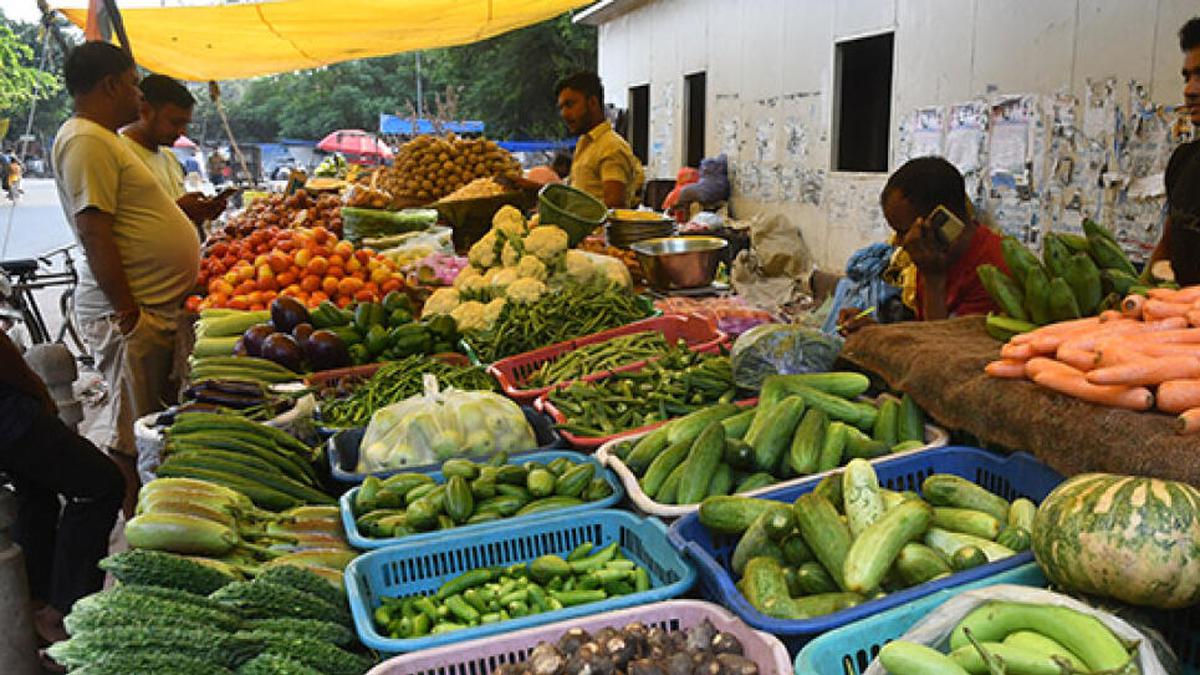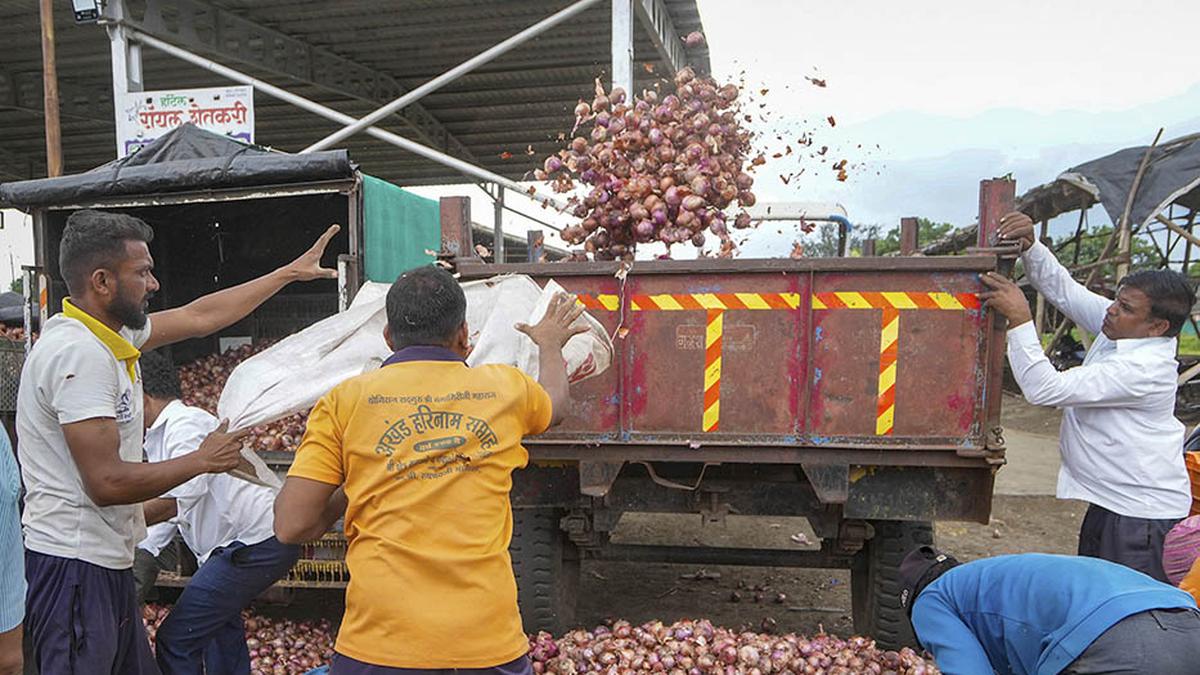A view of a vegetable market in New Delhi. File
| Photo Credit: Sushil Kumar Verma
India’s retail inflation accelerated to a four-month high of 5.7% in December 2023, from 5.55% a month earlier, led by an uptick in food prices that rose 9.5% nationally and breached the 10% mark for urban consumers, hitting 10.42%.
Although rural India’s consumers faced a slightly lower rise in food prices at just under 9%, they faced higher overall inflation at nearly 6%, compared to 5.5% faced by their urban peers in December.
While price rise hardened in December, the average consumer price inflation for the October-to-December quarter has been 5.4%, moderately lower than the Reserve Bank of India (RBI) projection of 5.6%. Yet, hopes of an interest cut on the horizon remain bleak, as the RBI expects an average price rise of 5.2% for the first half of 2024 before easing to its 4% target between July and September.
High food inflation in cities
Within the food basket, inflation picked up in pulses (20.73%), vegetables (27.6%), fruits (11.14%), and sugar (7.14%), while it was just fractionally lower for cereals and spices, which continued to record steep inflation of 9.9% and 19.7%, respectively, in December.
Interestingly, while consumer food prices rose faster in urban areas at 10.4%, rural consumers witnessed greater inflation in some products such as cereals (10.3%), milk, spices, and sugar.
Inflation continued to ease in the case of milk (5.1%), meat and fish (1.15%) and egg (4.4%). Meanwhile, the deflation in edible oil prices, which had surged in 2022 after the Russia-Ukraine conflict, remained virtually unchanged from November levels at 15%.
Fuel, light prices fall
On a month-on-month basis, however, the Consumer Price Index (CPI) declined 0.32% from November 2023 levels, with the Consumer Food Price Index easing by 0.9%.
Beyond food, most items saw lower inflation than November. Fuel and light prices fell 1% year-on-year, compared to a 0.8% dip in November. Transport and communication prices rose 2%, slightly below November levels, while inflation in personal care and effects eased from 7.8% to 7.3% in December.
Odisha records highest inflation
As many as seven States recorded inflation of over 6% — the RBI’s tolerance threshold for inflation — led by Odisha (8.7%), Gujarat (7.1%), Rajasthan (6.95%), and Haryana (6.7%). Karnataka and Telangana recorded an uptick of 6.65% each, followed by Maharashtra at 6.1%, as per calculations released by the National Statistical Office (NSO), which computes inflation rates for 22 major States. Punjab, with an inflation rate of 5.95%, and Bihar (5.9%), were the others to clock a higher price rise than the national average of 5.69%.
Delhi residents faced the lowest inflation rate of 2.95%, followed by the erstwhile State of Jammu and Kashmir (4.15%). Kerala (4.3%), Chhattisgarh (4.5%), Uttarakhand (4.7%), Tamil Nadu (4.97%), and West Bengal (4.98%) were the only other States with inflation rates below 5%.
‘Vulnerable outlook’
The uptick in inflation in December was entirely led by the food and beverages segment, with vegetables being the main culprit, said ICRA chief economist Aditi Nayar. “The outlook for the inflation for certain items like rice, wheat and pulses remains somewhat vulnerable, given the estimated fall in annual kharif production, as well as the lag in the ongoing rabi sowing season amid El Niño conditions,” she cautioned.
Notably, core inflation, which excludes food and energy prices, dipped below 4% for the first time since the onset of the COVID-19 pandemic. “Core inflation fell to 3.8%, marking its slowest rate since January 2020,” said Dipti Deshpande, principal economist at Crisil, attributing this to lower fuel inflation and easing global raw material prices.




